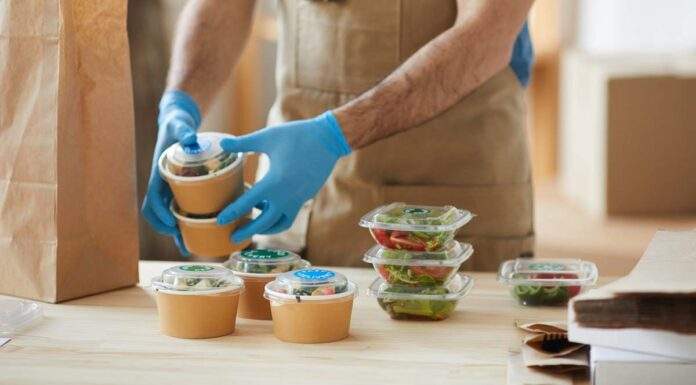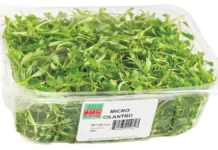
Article contributed by Dhruv Kishore Bole
According to recent research, eating at restaurants may expose the general public to PFAS chemicals that pose a serious risk to human health.
Traditional food packaging and service wares used in restaurants, such as burger wrappers, french fry pouches, moulded plastic trays, pastry and pizza boxes, have been found to contain alarmingly high levels of PFAS. These synthetic chemicals, also known as Per- and Polyfluorinated Substances, are widely used in food packaging containers, service wares, and nonstick cookware due to their resistance to oil, grease, and high temperatures. They’re also used in clothing, cosmetics, and firefighting foams PFAS chemicals may migrate onto food when PFAS chemicals in food packaging materials or service wares come into contact with it, posing a health risk. When the general public consumes PFAS-laced food or beverages, it accumulates in their body tissues, most notably the gut, making them vulnerable to a variety of potentially fatal infections such as altered immune systems, elevated cholesterol and blood pressure levels, an increased risk of cancer, and hormonal imbalances.
PFAS coatings are also used in restaurant cookware, but they pose no significant risk because they are bonded in such a way that they do not migrate onto food. Similarly, certain service wares, such as hot and cold beverage cups, plastic cutlery, and stir sticks, are not a concern because they are PFAS-free. Several studies have found higher serum PFAS concentrations in people who frequently eat at restaurants that use traditional packaging materials and service wares. Even low levels of PFAS exposure pose a significant health risk, and worse, once accumulated in the body, they cannot be completely eliminated. The negative effects of PFAS do not end there. When PFAS-coated packaging materials and service wares are discarded in landfills, they can pollute the surrounding soil and water, and when burned, they pollute the air.
There are thousands of PFAS, but some have been shown to pose significant public health risks: Perfluorooctanoic Acid (PFOA), Perfluorooctane Sulfonate (PFOS), Perfluorononanoic Acid (PFNA), Perfluorobutane Sulfonic Acid (PFBS), Gen X and Perfluorohexane Sulfonic Acid (PFHS). Because of the negative health consequences, many countries’ public health agencies have enacted legislation prohibiting the manufacture, sale, and distribution of PFAS, as well as implementation and enforcement deadlines. The law prohibits manufacturers from using, producing, or distributing food packaging containers, service wares, and cookware that contain PFAS chemicals intentionally added at or above the regulated limit. Restaurant operators are required by law to discontinue the use of PFAS-coated packaging containers, service wares, or cookware in food service establishments.
In restaurants, diners can be exposed to PFAS chemicals in food through the consumption of PFAS-laced fresh produce, meat, eggs, dairy, seafood, and water. Pregnant women and toddlers are the most vulnerable consumer groups. Pregnant women with high PFAS levels are at risk of a number of potentially fatal infections, which can lead to birth defects in their children, and toddlers exposed to PFAS may not respond as well to vaccines. PFAS can enter the food supply chain through a variety of pathways. Industries that manufacture PFAS or PFAS-coated products may release waste into the environment, contaminating soil and water. Crops grown with PFAS-laced water and sewage sludge have a high concentration of such chemicals in their yields. Animals that consume PFAS-laced crops accumulate chemicals in their body tissues, which are then passed on to their meat, milk, and eggs. Food and meat products laced with PFAS enter the food supply chain, increasing the likelihood of significant PFAS exposure.
Let’s look at how restaurant operators can protect their customers from PFAS chemicals in food while dining out.
Consumer Facing – Packaging Materials
Traditional food packaging containers with PFAS coatings used in restaurants include pizza boxes, burger wrappers, french fry bags, and moulded fibre containers and bowls. Restaurant operators must reconsider their food packaging materials. Restaurant operators should be aware that all PFAS contain fluorine, and if fluorine is detected in food packaging material in testing reports, PFAS chemicals in food packaging are likely to be present. They must talk to packaging vendors about PFAS concerns and look into the availability of PFAS-free packaging materials. Different service wares, containers, and cookware have different PFA coatings, and checking each one is challenging.
There are numerous safer alternatives to traditional PFAS-laced containers, service wares, and cookware on the market, and more safer alternatives are expected to hit the market in the coming years. Many food packaging companies have developed PFAS-free oil and grease resistance packaging solutions. Restaurants that use PFAS-free packaging or service wares must keep a copy of the product information catalogue on file. It must be presented to inspection authorities during inspection and made available to customers upon request.
There are numerous safer alternatives to conventional paper and paper board, as well as PFAS-coated food packaging and service wares, on the market. This includes bowls with Polylactic Acid (PLA) and acrylic-based coatings, plates with clay and acrylic-based coatings, takeaway boxes with PLA and bio-based coatings, and wrapper paper with bio-based coatings. Bamboo and PLA-based plates and bowls, as well as PLA-based takeout boxes, are available as a safer alternative to paper and paperboard-based plates and takeout boxes. In addition to being PFAS-free, such products are microwaveable, compostable, and come in a variety of colors. Various packaging and service wares solutions are available for light and heavy grease applications.
Restaurant operators must discuss the requirements with the vendor and purchase them based on the food that it is intended to hold and serve. Customers must also be educated about the dangers of heating food wrapped in conventional PFAS coated food packaging containers and pouches. It has also been shown that heating food wrapped in food packaging introduces PFAS into the food.
 Water Used for Drinking, Cooking and Washing
Water Used for Drinking, Cooking and Washing
In restaurants, water can be a significant source of PFAS exposure. Restaurant owners and operators must check with the local water supply body to see if the water has been PFAS-tested. They must request from the public health agency the limit for the various types of PFAS in question, as well as whether the PFAS levels in the water supply are within established acceptable limits. The Environmental Protection Agency in the United States has set the limit for PFAS chemicals in drinking water at 0.004 ppt for PFOA, 0.02 ppt for PFOS, 2000 ppt for PFBS, and 10 ppt for GenX. In the absence of testing, restaurant operators can voluntarily request that the water supply body test the water for PFAS contamination and install PFAS removal treatments. To be more secure, restaurant operators must install a reverse osmosis system with two stage point-of-use filters to remove PFAS from the water at the restaurant.
According to research, high-efficiency reverse osmosis systems can remove more than 90% of PFAS from water. It is important to note that the efficacy of various filtration systems in removing PFAS varies. Restaurant operators must discuss PFAS concerns with the vendor and install an efficient filtration system capable of removing the majority of PFAS from their water. It should be noted that boiling does not remove PFAS from water; rather, it increases its concentration. Another significant source of exposure in restaurants is packaged drinking water. Researchers discovered higher concentrations of PFAS chemicals in spring bottled water than in filtered bottled water, which is typically filtered using reverse osmosis. Using purified or treated bottled water instead of spring water is a safer option, unless the manufacturer declares the spring bottled water to be PFAS free.
Food Supplies
PFAS chemicals have been found in restaurant foods such as meat, seafood, fat, and oil. PFAS can accumulate in livestock animals such as cattle and poultry and be found in their blood and tissues. It can then be passed on to their eggs, meat, and milk, making its way up the food chain. Fish raised in PFAS-contaminated water are also a source of exposure. It should be noted that PFAS has been found in recreationally caught fish as well. Although the maximum PFAS level in poultry, meat, eggs, and dairy products has not been established, the negative health impact of PFAS has prompted research in the field. Restaurant operators must source their food supplies from reputable and licensed vendors who adhere to stringent food safety controls to ensure the safety of their food supplies. Furthermore, when importing food supplies, restaurant operators must prioritize sourcing food from countries with the safest food supplies. Restaurant operators must remain vigilant and keep an eye on PFAS-related public health advisories issued by the countries from which they import.
Furnishings, Roofing Materials and Paints
PFAS compounds are also used in roofing materials and furnishings such as carpets and rugs. These chemicals are also found in wall paints, wood lacquer and floor sealants. All of these materials are common in restaurants and are a significant source of PFAS exposure through inhalation. Carpets and rugs, for example, contain PFAS compounds, which break off from the carpets and rugs over time and become airborne, posing a significant health risk.
Carpets and rugs are a major source of PFAS exposure via inhalation. PFAS free carpets are available in the market. Carpets and rugs manufacturers are using both safer coatings and alternate materials to make carpet and rugs PFAS free. Non-chemical alternatives provide a different approach to stain resistance by changing the way carpets are made and the materials used. Polypropylene fibers, for example, used in carpets and rugs, are naturally stain-resistant and may not require chemical treatment. When chemical alternatives are used, safer chemicals are used to make carpet and rugs stain and soil resistant. Silicones, Silanes, And Siloxanes are some of the safer compounds that are commonly used in the carpet and rug industries due to their soil resistance. Roofing materials with silicon and acrylic-based coatings are available on the market as a safer alternative to PFAS coatings.
Many companies sell PFAS-free wall paints and surface sealants made of silicone and epoxy resins. As a safer alternative to PFAS-based lacquerers, silicon polishes and paraffin waxes are widely available on the market. It is critical to note that upgrading existing infrastructure to PFAS-free infrastructure requires significant investment. Given the razor-thin profit margins on which restaurants operate, restaurant operators must make a calculated decision on what should be prioritized to reduce customer’s exposure to PFAS. They must set aside a portion of their sales for future infrastructure upgrades to further reduce customer’s exposure to PFAS.
New research on PFAS toxicity has prompted national governments to pass legislation prohibiting its production, distribution and use. However, there are no national food safety advisories advising consumers on which foods to avoid in order to reduce PFAS exposure. Public health agencies have established a tolerable weekly intake (TWI) of 4.4 Ng/Kg of body weight per week based on scientific literature and toxicological reference values (TRVs). It is important to note that TWI is calculated for total PFAS exposure.
Restaurant operators must recognize their importance in protecting public health. They cannot sacrifice public health for business profit; after all, protecting the diner’s health is one of their social responsibilities. Restaurant operators must pledge to replace PFAS-containing packaging and service wares with more sustainable and safer alternatives. They must keep an eye on PFAS-related public health advisories in order to stay up to date on new PFAS-related developments and remain committed to complying with PFAS-related restaurant standards. National governments must also educate customers on potential health effects of PFAS chemicals and encourage them to buy PFAS free products. Consumers must understand that PFAS exposure cannot be completely avoided due to its widespread presence in the environment. They can reduce their exposure significantly by purchasing PFAS-free products and dining at restaurants that use PFAS-free packaging and service wares.
Restaurant operators have encountered some challenges in their efforts to achieve PFAS-free food service operations. However, current alternatives to PFAS-coated packaging and service ware solutions are costly and difficult to obtain in certain markets. This presents a problem for globally operating restaurant operators. Aside from that, some of the less expensive alternatives fall short of the capabilities of traditional PFAS coatings, increasing the likelihood of rising dining costs. Given the challenges involved, technology is not yet fully mainstream. As a result, much work is required to develop solutions that are cost-effective, widely available, and sustainable. To address this issue, all food supply chain participants, including national health agencies, must actively engage and collaborate.
As of now, restaurant operators must use whatever resources they have available to reduce the general public’s exposure to PFAS chemicals in food while dining out.
 Dhruv Kishore Bole is a hospitality and food safety specialist with qualifications in hotel management, food safety and quality management system. He has extensive experience spanning over twelve years in operational and training roles. His expertise centers on hospitality operation, food and beverage services and food safety. He has attended numerous workshops and conferences on customer service, leadership and food safety and quality and is certified by Food Safety and Standards Authority of India in food safety competencies. He is currently offering services in the capacity of Faculty, Food & Beverage service at State Institute of Hotel Management, Siddhpur, India. He is an empanelled trainer with Hero Mindmine and IL&FS Skills. He is a member of Quality Council of India and an instructor and proctor with ServSafe for India region.
Dhruv Kishore Bole is a hospitality and food safety specialist with qualifications in hotel management, food safety and quality management system. He has extensive experience spanning over twelve years in operational and training roles. His expertise centers on hospitality operation, food and beverage services and food safety. He has attended numerous workshops and conferences on customer service, leadership and food safety and quality and is certified by Food Safety and Standards Authority of India in food safety competencies. He is currently offering services in the capacity of Faculty, Food & Beverage service at State Institute of Hotel Management, Siddhpur, India. He is an empanelled trainer with Hero Mindmine and IL&FS Skills. He is a member of Quality Council of India and an instructor and proctor with ServSafe for India region.























